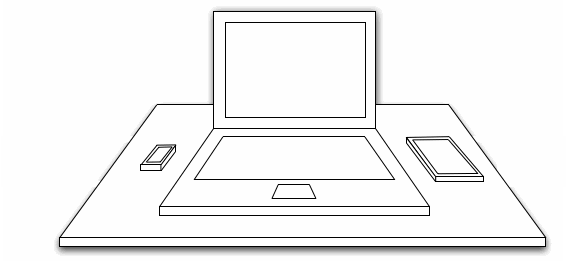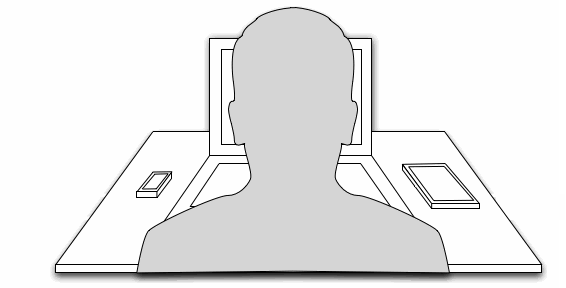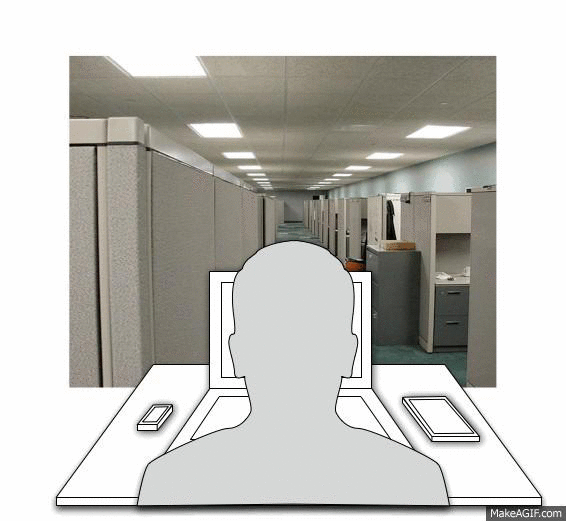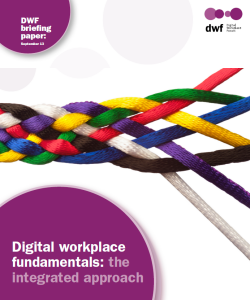What’s different between intranet management and digital workplace management?
So the digital workplace is already here, but messy; we think the intranet is still very important and we’ve got a hunch that the team with the skills to make things better could be the intranet team.
So what’s that job going to look like? The intranet guys might have the skills but what’s going to be different?
What does it mean to “manage” the digital workplace?
Straight off the bat, let’s deal with that terribly tricky and loaded phrase “manage”. I am not suggesting that the intranet team seize control of the whole of your IT infrastructure in some hideous and bloody corporate coup d’état. For a start, that would be bizarre and impossible, and secondly I don’t think many of my intranet colleagues would particularly enjoy the day-to-day rigour of the high-level management of IT. There’s lots of worrying about budgets, consternation about when assets will be depreciated and negotiations with behemoths like Microsoft. Oh and an awful of a lot of shouting and blood on the carpet when things go wrong.
The management of the digital workplace is best seen as “stewardship”. It contributes value by improving the way all of these systems fit together. This form of management is persuasive, logical and humane. It is about expressing the vision of a working environment that suits employees so that they and their work are considered ahead of the mere provision of systems. When stakeholders see their part of a greater whole, they are more likely to act in concert than in competition.
On top of that work there is some “noticing and acting” — seeing what’s wrong and attempting to fix problems that people are having. This is more reactive work that many intranet managers know well. Finally, “managing” the digital workplace needs to include some grown-up, mature stuff about governance, standards and controls.
In this and previous blog posts I’ve explained that the digital workplace needs someone to think about the user’s context and environment to add structure around lots of these disparate systems. But to do any of this with success, and in particular for an existing intranet practitioner, I think there needs to be a subtle change in perspective.
To become “digital workplace managers”, intranet managers need to take several steps back from the intranet and look at the broader context of devices, environment and situations that support or hamper users’ experiences.
Moving your mind’s eye
Let’s give our perspective a bit of a shove then.
The first perspective that we need to be aware of, but not actively force upon our thinking, is the technical plane. Thinking of servers, network diagrams and use case diagrams isn’t going to get us to the right place. Intranet teams are usually pretty good at not thinking overly technically already.
The default (in my opinion) intranet way of thinking is of the page architecture and the site map or structure. These are immensely important when designing web services, but I suspect that they have begun to dominate our thinking. The intranet “industry” is obsessed with screenshots for example. After more than a decade of being a practising information architect (I ain’t perfected it yet) I find it hard not to think in boxes, arrows and categories.

The world of the digital workplace is much wider than that! For a start individuals have a choice about what devices to use, and that challenges our idea of the intranet as being a singular thing with a known structure and a “home page”. It’s likely that any structure might be different between devices, and that the interface may be entirely different between mobile and desktop. Then there’s the world of start-menus and home screens and the operating system level we tend to be blind to. Usernames, passwords, files, VPNs, Alt+tab, as well as the heavy iron such as Microsoft Office, SAP and the like.
Let’s step back from the screen and include those choices in our view. So consider the desk:

That’s better. Now we can see the devices that the user might have access to. The user might choose different devices for different tasks. But hang on. This looks a bit IT hardware focused. Let’s not catch ourselves out. Something, or rather, someone is missing:

Much improved. The human is back in the picture – that persistent “problem between keyboard and chair”.
The endpoint of all technology is human, and we need to keep that at the forefront of our minds. So here we are: we’ve changed our perspective to be just behind the employee’s ear as they are beavering away at work and doing all of the things that they are paid to do.
He or she has a choice of devices, and when a certain task is required, a choice is made. But what is informing that choice? We’ve still missed an essentially important and final layer to our perspective change: context. If the endpoint of all technology is human, humans need to exist in physical space. The type of physical space for work has more variety than ever. Cube-farms have surrendered to open offices in the main, but there is also informal meeting space, travel and the home.

You are a digital workplace manager now
So here we are, hovering just behind the user’s head at an airport or in a meeting room. Somewhere in that head is a vague inkling to do something. Slowly the notion forms into an action that may conclude with the user completing a task in the digital workplace, taking into account their physical environment.
They don’t want to fire up the laptop and get on wifi to be able check the address of the next meeting. They are going to try their iPhone for its low latency startup and always-on network access. They aren’t going to want to fill out an expense claim on a busy train; they’ll wait until they’ve got a nice flat surface on which to lay out their receipts, and a nice big keyboard to enter the data.
This is the new horizon, and equipped with such a change of worldview you can begin to get inside the employee’s head and make design decisions for new functionality, and make interventions where you notice problems.
This is a hugely broader design space than back in the flat world of the intranet, where we imagine everyone sitting at a desk, and way beyond the idea of merely mobile. Prepare to be involved with a set of stakeholders that are much wider too. The world of intranets was concerned with information, process and latterly collaboration, therefore you tended to become involved with partners based around internal communications, knowledge management and HR systems. Here we are dealing with the physical environment, working behaviours, personal safety, risk, information security: the whole schmear, unconstrained by what application something is rendered in.
So be prepared for discussions up hill and down dale, but whatever has changed, the basic drive and desire to improve the outcome for the user and to humanize technology remains.
Footnote: Images in graphic used under CC and CC-attribution licences from the following sources:
http://commons.wikimedia.org/wiki/File:Highgrove_Kitchen.jpg
http://commons.wikimedia.org/wiki/File:Office-Cubicals-5205.jpg
http://gefeoz.deviantart.com/art/Office-design-M03-152483931
http://www.flickr.com/photos/10226584 @N06/4696513187.
Related research: Digital workplace fundamentals
Digital workplace fundamentals – an integrated approach
 This report suggests a blueprint for launching a successful digital workplace initiative anchored on two key prerequisites, namely scope (what is included) and approach (how it is delivered).
This report suggests a blueprint for launching a successful digital workplace initiative anchored on two key prerequisites, namely scope (what is included) and approach (how it is delivered).
Among the key takeaways highlighted in this report are 1) the digital workplace permeates all aspects of working life, 2) it affects technology, physical workplaces and people, and 3) cross-functional teams increase the chances of a project successfully meeting its outcomes.
Categorised in: Digital workplace, Digital workplace strategy
